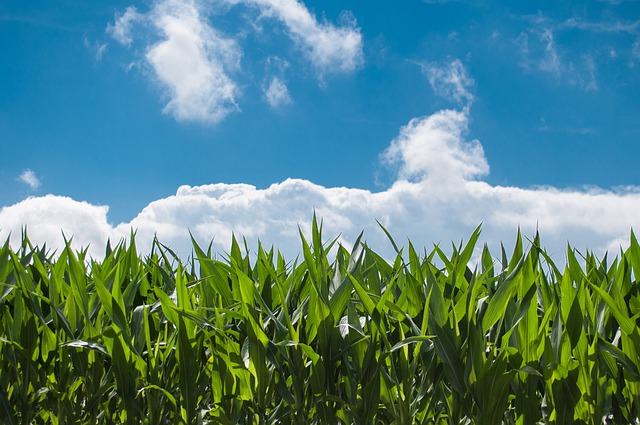Water, water is everywhere, and we rarely think about it. For a substance that is an integral part of life as we know it, most of us don’t spend much time thinking about our water until something happens to it, as has been the case in Flint, Michigan, Jackson, Mississippi, Puerto Rico, and numerous First Nations reserves in Canada recently. But even when you know about your water and where it comes from, there are still many surprising facts about water that you may be missing.
10. There are tiny crustaceans in New York City water.

There are over eight million people living in New York City, and you have to assume that most of them use the city's water supply every day. There's a good chance that not all of them know that there are tiny crustaceans living in their water.
The little critters are a type of shrimp known as copepods, and they're microscopic. People have been drinking them for years without realizing it. Someone on Reddit posted a photo of one in 2010 and caused a bit of a stir, but it wasn't the first time. In 2004, the same thing happened to people who feared the little crustaceans will not be kosher for the city's Orthodox Jewish population. The city did not want to filter them because of the benefits of their storage and recommended that those who did not want them filter water on one's own.
But the crustaceans aren't just there for no reason; the city keeps them there on purpose. Their job is toeat mosquito larvae .
9. Corn fields produce up to 4,000 gallons of sweat per day.

When you do a lot of physical work on a hot day, you can feel pretty gross as sweat soaks through your clothes. But at least know that you're in good company when it comes to sweat, as even corn has to succumb to it from time to time. Although, if you hate humid days, then maybe you should blame the corn, as their sweat is a major contributor to it.
Corn plants release water through their leaves in hot weather, which seems perfectly normal. However, corn grown in large quantities can result in staggering amounts of water evaporating into the air. One acre of corn can result in entering the atmosphere3000 to 4000 gallons water per day. For some context, the US grows about 90 million acres of corn. That's 360 billion gallons of water a day.
You can see how this corn sweat may be the reason why the fields of middle America are inexplicably wetter than places like Florida at the right time of year. That's why some heat waves end up being even worse.
8. A drop of water can remain in the ocean for 3000 years

Most of us know about the water cycle and how water evaporates, condenses, precipitates, and so on. But there's a hell of a lot of water in the world, so understanding how water works in general is easy, but understanding how water works in a specific way can be tricky. And by that, we mean, what about the life cycle of one particular water molecule? How does that water live its life?
A drop of water can spend about 9 days in the atmosphere before it falls back to earth. But on earth it may not move for a long time again. This particular drop may end up in the ocean and stay there for a while. 3000 years before it evaporates again. And while that seems like a long time, it's a blink of an eye compared to water that hits a place like the Antarctic ice shelf. If the water freezes there, it will stay in place for about 900,000 years .
7. It takes a drop of water 90 days to cross the Mississippi River.

Speaking of water droplets, if one stays in the ocean for 3,000 years, how long do other drops stay in places like rivers that move fast? For a drop of water in the Mississippi River, the pace is fast, but maybe not as fast as you think.
It takes about 90 days .
The river is not exactly a fast moving body of water in most places. At the beginning the flow is only 1.2 miles per hour When it reaches the bay, the speed reaches three miles per hour. However, this is quite variable along its length and often depends on factors such as the depth and width of the river.
6. Volcanoes can release millions of gallons of water into the atmosphere.

Water is not what we usually associate with volcanoes. When they blow, they spew out smoke, ash, and dangerously hot lava, and it would seem that water wouldn’t stand a chance in such an environment. But that’s not true at all, and in fact, when a volcano erupts, it releases a huge amount of water vapor. Those massive clouds you’ve seen in photographs rising from volcanoes are often not smoke at all, or even just smoke.
On January 15, 2023, a volcanic eruption occurred in Tonga. What made this eruption different from many others was that the Tonga volcano was in the ocean, so in addition to the sulfur and other elements ejected by the volcanic explosion, it also absorbed water from the surrounding ocean.
The eruption released so much water vapor into the atmosphere that scientists believe it will change global climate conditions for many years. In fact, it released 10% of the volume of water vapor that normally exists in the entire stratosphere, or about 50 million tons . This is thought to have increased atmospheric humidity by about 5% worldwide and, as a result, may have warmed the planet rather than cooled it as volcanoes usually do.
5. Groundwater far outstrips glaciers as water reservoirs on Earth.

We know there are many places in the world where we can find water if we need it. The oceans obviously hold a lot, but glaciers have long been thought to be a source of fresh water, along with groundwater sources. But only recently have scientists learned that groundwater may be a much richer source of water than previously thought, and far outweighs glaciers in volume.
Current estimates of groundwater take into account depths of up to 10 kilometers. Previously, groundwater reserves were estimated at only about two kilometers Anything deeper has not been well studied and is difficult to pinpoint, but technological advances have allowed for a better estimate of what might be further below the surface. Current estimates are that we have about 43.9 million cubic kilometers (km3) groundwater reserves.
These new figures make groundwater the world's second-largest source of water, behind the ice sheets of Antarctica (27 million km3), Greenland (3 million km3) and glaciers, which hold only a relatively small amount of water (158,000 km3).
4. Atmospheric rivers move 7-15 times more water than the Mississippi River.

Every time you look up and see a cloud, you see water in the sky. But how much is there? We've seen that a volcano can add a lot, as can a cornfield, for that matter, but that's just the beginning. There are actual atmospheric rivers that move almost unbelievable amounts of water around the planet, all in the sky above.
Name atmospheric river refers to moisture pathways that can carry water from tropical regions to either pole and greatly influence weather patterns along the way. Water evaporates at the equator and then circulates through the atmosphere, almost dragging more water along with it in a narrow but large band.
While we may look at rivers like the Amazon and the Mississippi and think they have a large volume, they have nothing on atmospheric rivers, which can carry 7 to 15 times more water than the average daily flow of the Mississippi. Some have been shown to move up to 26 km3 per day That's about 6,870,000,000,000 gallons. And once it gets over the mountains and into cooler climates, it condenses again and rains again.
3. The atmosphere contains more fresh water than all the rivers on Earth combined.

Knowing how much water an atmospheric river can move, you have to wonder how much water is in the atmosphere at all. The answer may not surprise you at this point, but it's a lot. In fact, there's more fresh water above us than in all the rivers on the planet.
Rivers lay claim to 0,0001% of the world's water. But in reality, the atmosphere holds 0.001%. This corresponds to12,900 km3 water in the air. That's about 3.4 quadrillion gallons. Compare that to the relatively small 2,120 cubic kilometers you'll find in the world's rivers.
2. Superionic ice is the 4th phase of water.
Most of us are familiar with the three phases of water, which are vapor, liquid, and solid. In 2021, scientists discovered a fourth phase, and it may be more common than the other three. It's also much more extreme than the ones we're used to.
This substance , known as superionic ice , looks like ice, but it's hot, black, and exists inside planets. Researchers have even created some in the lab, using lasers to raise the temperature of water by thousands of degrees while simultaneously subjecting it to millions of atmospheres of pressure, which water in the center of a massive ice planet can withstand. It turned into hot, crystalline ice.
If you were to bury yourself in center of Neptune , you might find a superionic ice core. The substance, created in a lab, only lasted a moment, but at constant temperature and pressure, it could be the center of one of these distant worlds. But it is also thought to exist on Earth, where it plays a role in how our magnetic field works.
1. There are 326 million trillion gallons of water on Earth.

All this talk about water, and in particular large volumes of it, might make you wonder just how much of it we have lying around. Well, it's a lot. In fact, it's one of those numbers that's so big that some people don't even write it down properly.
Many sources will say , what in the world there are about 326 million trillion gallons of water. Technically speaking, a million trillion is not a real number, and this jargon seems to have been made to try to make it easier to understand than simply saying we have 326 quintillion gallons, That's why What the hell is a quintillion and how could any average person even hope to imagine such a thing?
Despite the huge volume, only a minimal amount is drinkable. Less than 3% of all this water is fresh water. About 68% of which frozen in glaciers, and 30% are underground. Most of our fresh water comes from rivers, which account for 1/10,000 of one percent of all the water in the world.














Оставить Комментарий